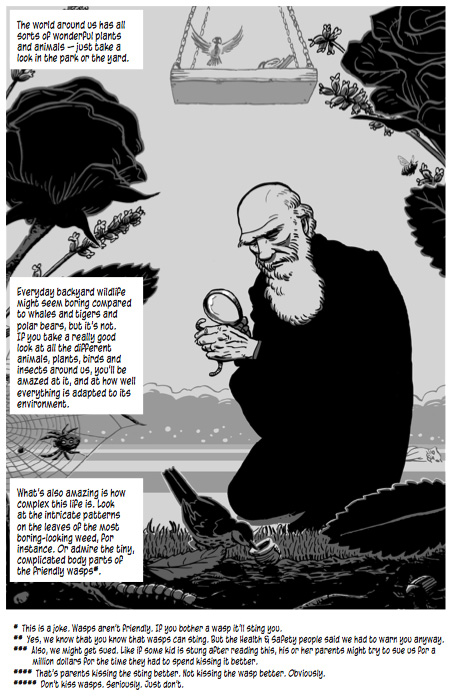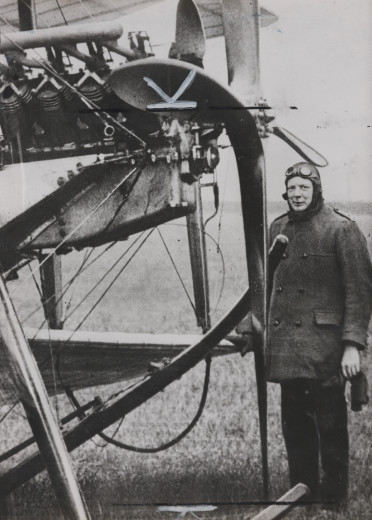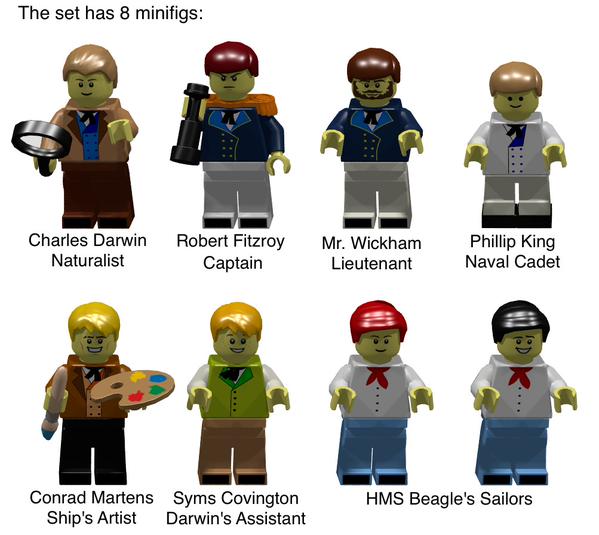Whewell’s Gazette
Your weekly digest of all the best of
Internet history of science, technology and medicine
Editor in Chief: The Ghost of William Whewell
Volume #35
Monday 16 February 2015
EDITORIAL:
It seems like only yesterday that we posted the thirty fourth edition of Whewell’s Gazette the preeminent weekly #histSTM links list and here we are back again with Volume #35.
Last weeks editorial touched upon the theme of the lone genius myth in the history of science and it has raised its head again in the last seven days with the celebration of Darwin Day on 12 February, the anniversary of the birth of Charles Darwin. The international devoting of a day to one nineteenth century natural historian does rather smack of a lone genius cult, which thought provoke Rebekah “Becky” Higgitt (@beckyfh) to suggest that there should be a #histSTM #NOLONEGENIUSESDAY.
Now I do understand that this day was created as part of the promotion of the scientific theory of evolution against the encroachment of creationism and intelligent design, particularly in the US. However by placing it on Darwin’s birthday and naming the day after him does rather make it look as if he created the theory all on his ownsome.
There was already a rather sweet comment from the Alfred Russel Wallace Twitter account (@ARWallace):
International Business Times: Darwin Day 2015: Alfred Russel Wallace, the forgotten evolutionist overshadowed by Charles Darwin
There are however many others who deserve more than a mention if talking about the evolution of the theory of evolution starting with James Burnett, Lord Monboddo, Pierre-Louis Moreau de Maupertuis, and Georges-Louis Leclerc, Comte de Buffon moving forward over Jean-Baptiste Pierre Antoine de Monet, Chevalier de Lamarck and Darwin’s own grandfather Erasmus, the geologists Adam Sedgwick and Charles Lyell and the evolutionists Robert Chambers and Patrick Matthew and other less prominent figures. To this list we could add Captain Robert Fitzroy and other members of the crew of the Beagle.
Darwin was anything but a lone genius.
My suggestion, which will undoubtedly be totally ignored, is that we replace Darwin Day with an Evolution Day on the anniversary of the reading of the joint Darwin-Wallace paper at the Linnean Society in London, 1 July 1858, and on that day celebrate all of those who contributed to the evolution of this great theory.
As you can see our masthead owl is still on his skating holiday and this week has sent us a colour photo of himself and his partner.
Birthdays of the week:
Charles Darwin born 12 February 1809
“The voyage of the Beagle has been by far the most important event in my life and has determined my whole career”. Charles Darwin
“Scarcely anything in my life made so deep an impression on me. I sometimes think general & popular treatises are almost as important for the progress of science as original work” Darwin on reading John Herschel’s book on scientific method.
“What Lyell did for the inorganic world, Darwin did for the organic.” — Emil du Bois-Reymond “Exposition of the Darwinian Theory,” 1877
“I cannot understand why you scientific people make such a fuss about Darwin. Why, it’s all in Lucretius!” — Matthew Arnold, 1871
The Royal Society: Notes and Records: The many lives of Charles Darwin: early biographies and the definitive evolutionist
University of Wisconsin-Madison: Darwin Day celebration focuses on islands, isolation
Peddling and Scaling God and Darwin: Charles Darwin through Christian spectacles
Darwin Correspondence Project: Darwin and Religion: an introduction
Darwin Correspondence Project: Darwin, C. R. to Gray, Asa
Darwin Correspondence Project: Earthworm activity
Irish Philosophy: The Evolution of Evolution: Darwin’s philosophical forebears
Yovisto: Charles Darwin and the Natural Selection
Letters from Gondwana: Darwin and the Strangest Animal Ever Discovered
Twilight Beast: The bizarre elongated llama
University of Reading: Happy Birthday, Charles Darwin
Until Darwin: Darwin, Slavery, the HMS Black Joke, and Seaman Morgan
History of Geology: Charles Darwin – the Monster Slayer
Science Friday: A Year of Darwin
Life Traces of the Georgia Coast: Of Darwin, Earthworms, and Backyard Science
Origins a history of beginnings: When Darwin Met a Neandertal
Brain Pickings: A Graphic Biography of Darwin
 The Mountain Mystery: Charles Darwin, the Geologist
The Mountain Mystery: Charles Darwin, the Geologist
The Public Domain Review: The Naturalist and the Neurologist: On Charles Darwin and James Crichton-Brown
Letters from Gondwana: Darwin, Owen and the ‘London Specimen’.
Krulwich Wonders: Charles Darwin and the Terrible, Horrible, No Good, Very Bad Day
Ocean Portal: Charles Darwin’s Ocean Upwelling
Emil du Bois_reymond, “Darwin and Copernicus”
American Museum of Natural History: Darwin’s Kids Doodled All Over His “Origins of Species” Manuscript
Geological Society of London Blog: Happy Darwin Day!
The Irish Times: Unthinkable: Why Charles Darwin is a threat to religion
Herald media: Science and Society: Darwin’s sacred cause – and Lincoln’s also.
The Friends of Charles Darwin: The Darwin bicentennial oak, 6 years on
Join the Friends of Charles Darwin
The twelfth of February is also the birthday of other prominent figures in the history of biology, Jan Swammerdam for example. Whereas my Twitter stream was flooded with tweets about Darwin, my own were the solitary tweets celebrating Swammerdam.
Jan Swammerdam born 12 February
The Renaissance Mathematicus: A Biological Birthday
Quotes of the week:
“There’s a story told about a distinguished cardiac surgeon who, about to retire, decided he’d like to take up the history of medicine. He sought out a historian friend and asked her if she had any tips for him. The historian said she’d be happy to help but first asked the surgeon a reciprocal favor: “As it happens, I’m about to retire too, and I’m thinking of taking up heart surgery. Do you have any tips for me?”” – Steven Shapin in his WSJ review of Steven Weinberg’s “To Explain the World”
“Mr. Weinberg identifies his account as a personal view, and there’s no reason why people shouldn’t want to know how an eminent modern scientist (and public intellectual) thinks about all sorts of things. What is interesting is that these different stories about the historical development of science persist, with no prospect that professional historians of science will ever own their subject as, say, art historians own the history of art. Science remains almost unique in that respect. It’s modernity’s reality-defining enterprise, a pattern of proper knowledge and of right thinking, in the same way that—though Mr. Weinberg will hate the allusion—Christian religion once defined what the world was like and what proper knowledge should be. The same circumstance that gives science its immense modern cultural prestige also ensures that there will be an audience for its idealization and celebration. “To Explain the World” is for that audience.“ – Steven Shapin in his WSJ review of Steven Weinberg’s “To Explain the World”
Valentine’s Day
STM historians are not heatless and delivered up some Valentine’s day contributions
1746 years ago today, St Valentine was beaten with clubs and beheaded outside the Flaminian Gate in Rome. Happy Valentine’s Day, everyone! @BarnabyEdwards
Dr Jennifer Evans: Aphrodisiacs, Fertility and Medicine
The Recipes Project: Lizards and lettuces: Greek and Roman recipes for Valentines Day
Darwin Correspondence Project: Darwin’s notes on marriage
Atomic Heritage Foundation: Donald & Martha Ross
The Chirurgeon’s Apprentice: The Chimps & The Surgeon: A history of Heart Transplants
Lapham’s Quarterly: Mutual Interest: The courting of Marie Curie
The H-Word: Marriage and the making of scientific careers
O Say Can You See: How do you mend a broken heart?
PHYSICS & ASTRONOMY:
The Washington Post: Val Logsdon Fitch, physics pioneer and Nobel laureate, dies at 91

Val Logsdson Fitch, who won the Nobel Prize for physics, at Princeton University in 1980. (Kanthal/ASSOCIATED PRESS)
The New York Times: Val Fitch, Who Discovered Universe to Be Out of Balance, Is Dead at 91
Voices of the Manhattan Project: Val Fitch’s Interview
Scientific American: How a Wire Was Used to Measure a Tiny Force of Gravity
The Nature of Reality: The Big Bang’s Identity Crisis
Philly:com: Year of Light marks a turning point
Starts with a Bang: The Tragic Fate of Physicist Paul Ehrenfest
APS Physics: J Willard Gibbs
Uncertain Principles: Science Story: Not a Bath House
Yovisto: Leo Szilard and the Atomic Bomb
Voices of the Manhattan Project: Louis Turner’s Interview
http://manhattanprojectvoices.org/oral-histories/louis-turners-interview
Scientific American: How 2 Pro-Nazi Nobelists Attacked Einstein’s “Jewish Science” [Excerpt]
Yovisto: Fritz Zwicky and the Dark Matter
Math Buffalo: Physicists of the African Diaspora
Atomic Heritage Foundation: The Science Behind the Atom Bomb
EXPLORATION and CARTOGRAPHY:
Medievalists.net: The Universal Atlas of Fernão Vaz Dourado
Medievalists.net: Medieval Maps of Britain
British Library: American studies blog: Forgotten histories of the Passage: the whalers
![Above: frontispiece from vol. 2 of Scoresby's, 'An Account of the Arctic Regions' [copy on display in Lines in the Ice, G.2602 & G.2603]. Image from Archive.org - See more at: http://britishlibrary.typepad.co.uk/americas/2015/02/forgotten-histories-of-the-passage-the-whalers.html#sthash.BQkLShUI.dpuf](https://whewellsghost.files.wordpress.com/2015/02/6a00d8341c464853ef01b8d0d38547970c-500wi.jpg?w=640)
Above: frontispiece from vol. 2 of Scoresby’s, ‘An Account of the Arctic Regions’ [copy on display in Lines in the Ice, G.2602 & G.2603]. Image from Archive.org – See more at: http://britishlibrary.typepad.co.uk/americas/2015/02/forgotten-histories-of-the-passage-the-whalers.html#sthash.BQkLShUI.dpuf
MEDICINE:
The Sloane Letters Blog: On Tooth Worms
George Campbell Gosling: Perceptions of Pregnancy
Royal College of Physicians: A physicians cane and the secrets it contained
Huffpost Science: Shifting the Old Debate over Vaccines
Renaissance Utterances: ‘Poky pigges and stynkynge makerels’: Food standards and urban health in medieval England
NYAM: Tattoo Removal: Method or Madness?
University of Minnesota: HSTM: Eating through the Archives: Milk Pancakes (1820)
Ancient Origins: Ancient skull was drilled and harvested for medicine in the 18th century
The Recipes Project: The Torture of Therapeutics in Rome: Galen on Pigeon Dung
EARTH & LIFE SCIENCES:
Conciatore: Botanical Gardens Reprise
iiTVidya: Henry Walter Bates
Notches: Sexual Politics in the Era of Reagan and Thatcher: Marc Stein in Conversation with Jeffrey Weeks
Niche: One Flew Over The City: Sensorial Experiences of Urban Space
Wonders & Marvels: Humanness in the Age of Discovery: Dog-Headed Men
The Public Domain Review: Neandethals in 3D: L’Homme de La Chapelle
Nautilus: Safecracking the Brain: What neuroscience is learning from code-breakers and thieves
American Museum of Natural History: Barnum Brown: The Man Who Discovered Tyrannosaurus rex
Yovisto: Barnum Brown and the Tyrannosaurus Rex
Palaeo-Wanderer: A blog about the past, living in the present: Introduction
CHEMISTRY
The Royal Society: Philosophical Transactions A: The periodic table: icon and inspiration
![The periodic table of ‘endangered elements’. Adapted from the original version created by Mike Pitts of the UK’s Chemistry Innovation Knowledge Transfer Network [6]; apart from uranium, the abundances of all radioactive elements have been ignored. (Online version in colour.)](https://whewellsghost.files.wordpress.com/2015/02/f2-medium.gif?w=640)
The periodic table of ‘endangered elements’. Adapted from the original version created by Mike Pitts of the UK’s Chemistry Innovation Knowledge Transfer Network [6]; apart from uranium, the abundances of all radioactive elements have been ignored. (Online version in colour.)
Gizmodo: A Secret Stash of Moon Artefacts Has Been Found in Neil Armstrong’s Wardrobe
NYAM: Recipes for Cooking by Electricity (Item of the Month)
IEEE Global History Network: Walter H Brattain
AIP: Oral History Transcript – Dr Walter Brattain
Inside the Science Museum: Winston Churchill: Up In The Air

Winston Churchill after his arrival by air at Portsmouth, from Upavon, Wiltshire, 1914. Image credit: Science Museum / SSPL
Science Museum: Online Science: Wall telephone with Blake transmitter, 1880–1900
Grantland: The Difference Machine: Ada Lovelace, Grace Hopper, and Women in Tech
Grist: Meet Lewis Latimer, the African American who enlightened Thomas Edison
Nautilus: The Future of the Web Is 100 Years Old
Endgadget: Annie Easley helped make modern spaceflight possible

To celebrate Black History Month, Engadget is running a series of profiles honoring African-American pioneers in the world of science and technology. Today we take a look at the life and work of Annie Easley.
Yovisto: Henry Steinway and the Grand Pianos
META – HISTORIOGRAPHY, THEORY, RESOURCES and OTHER:
Tincture of Museum: 1. Natural History Museum Library and Archives – Tinc in Museum Library Land
MBS Birmingham: “How are we meant to educate ourselves?” What Libraries did for us
Darin Hayton: Explaining A Good Question
King’s College London: Current Maughan Library exhibition: The great leveller: humanity’s struggle against infectious disease
Histscifi.com: Seeing From Afar
BSHS: BSHS Travel Guide
Storify: The research culture is not ready for signed peer review.
THE: World’s oldest scientific journal is focus of new exhibition
The Scientist: Scientific Publishing, 1665
The Guardian: 350 years of publishing from the world’s oldest science journal – in pictures
Early Modern Letters Online: The Correspondence of Athanasius Kircher
American Science: A Very Recent History of Histories of the Future
iai news: Beauty is Truth?
Gothamist: Two-Faced Kitten & Cigar-Smoking Squirrels On View At Morbid Anatomy Museum
The Atlantic: A Failed Metaphor for Intelligent Design
Society for the Social History of Medicine: Career Development Service
Brill History of Modern Science Series: Call for Book Proposals
Making Science Public: Science, politics and science communication
ESOTERIC:
Bottle Rocket Science: Giordano Bruno on Prudence
Conciatore: Caterina Sforza
The Renaissance Mathematicus: Do you believe in magic?
Conciatore: Iron into Copper
BOOK REVIEWS
JHI Blog: Annotations and Generations John Winthrop’s interactions with the marginalia of John Dee
PopMatters: God’s Planet: In Conversational Orbit of ‘God’s Planet’ With Owen Gingerich
Gonit Sora: Seduced by Logic: Emilie du Chatelet, Mary Somerville and the Newtonian Revolution
Science Book a Day: Severed: A History of Heads Lost and Heads Found
Marx and Philosophy: Review of Books: Ted Benton, Alfred Russel Wallace: Explorer Evolutionist, Public Intellectual – a thinker for Our Own Times?
What’s in John’s Feezer?: Owning Owen
Ether Wave Propaganda: Patrick McCray’s The Visioneers
Brain Pickings: A Radical Journey of Art, Science, and Entrepreneurship: A Self-Taught Victorian Woman’s Visionary Ornithological Illustrations
The Independent: To Explain the World by Steven Weinberg, book review: A bracing and necessary guide to the discoveries of the 17th century
The Wall Street Journal: Why Scientists Shouldn’t Write History
(If you run into a pay wall google the title, Why Scientists Shouldn’t Write History, and click on the first link!)
NEW BOOKS:
Historiens de la santé: Healthcare in Ireland and Britain from 1850: Voluntary, regional and comparative perspectives
Enfilade: Commercial Vision in the Dutch Golden Age
THEATRE:
Wellcome Collections Blog: Tammy Wants You
FILM:
Nature: And the winner is: not science
TELEVISION:
SLIDE SHARE:
VIDEOS:
Vimeo: Ruth Bourne Turing and Bletchley Park
Youtube: BBC – My Father the Bomb and Me
Youtube: Thomas Edison interviewed at the age of 84
VOX: The origins of the anti-vaccine movement, in 3 Minutes
RADIO:
PODCASTS:
ANNOUNCEMENTS:
University of Cambridge: Science Festival: Longitude Found 21 March 2015
University of Cambridge: Science Festival: Infectious knowledge: science in popular culture 22 March 2015
Warwick: Humanities Research Centre: Ruling Climate: The theory and practice of environmental governmentality, 1500–1800 16 May 2015
York University Toronto Canada: Science Technology, and the Modern Canada 24-25 April 2015
NI Science Festival: Lecture: How To Make a Dwarf Mammoth 20 February 2015
Perspectives of Science: Special Issue: CfP: The Second Metaphysical Club and its Impact on the Development of American Science and Philosophy
University of Oulu Finland: Testing Philosophical Theories Against the History of Science Workshop 21 September 2015
University of Lisbon: CfP: 2nd Portuguese-Brazilian Meeting on the History of Tropical Medicine 14-16 October 2015
CHF: Alien Abduction and Psychic Spies: Lecture: On the Edges of Cold War Science 26 February 2015
Making Waves: Workshop 4: Scientific Lives: Oliver Lodge and the History of Science in the Digital Age
Senate House Library: CFP: Marginal presences: unorthodox belief and practice, 1837–2014 23 April 2015
Institute of Historical Research: Lecture: History and Biography – Professor Lawrence Goldman 19 March 2015
Penn State University: Polar Day 2015 27 March
LOOKING FOR WORK:
Royal Holloway: University of London: Eighteenth Century British History and Gender History Teaching Fellow
Royal College of Physicians of Ireland and Apothecaries Hall of Ireland launch PhD Fellowship in the history of medicine in Ireland
Royal Museums Greenwich: Intern Programme: History of Science & Technology
Birkbeck: University of London: History of Science and Medicine (MA)
CHF: Director, Center for Applied History
British School at Rome: Giles Worsley Rome Fellowship
University of Swansea: Lecturer in Medical History
Metropolitan New York Library Council: Reference Archivist, Manuscript Department – The Patricia D. Klingenstein Library
Science Museum: Library and Research Administrator

















